SOURCE Explore: Finding Yourself in the Archives with Special Collections Research Center
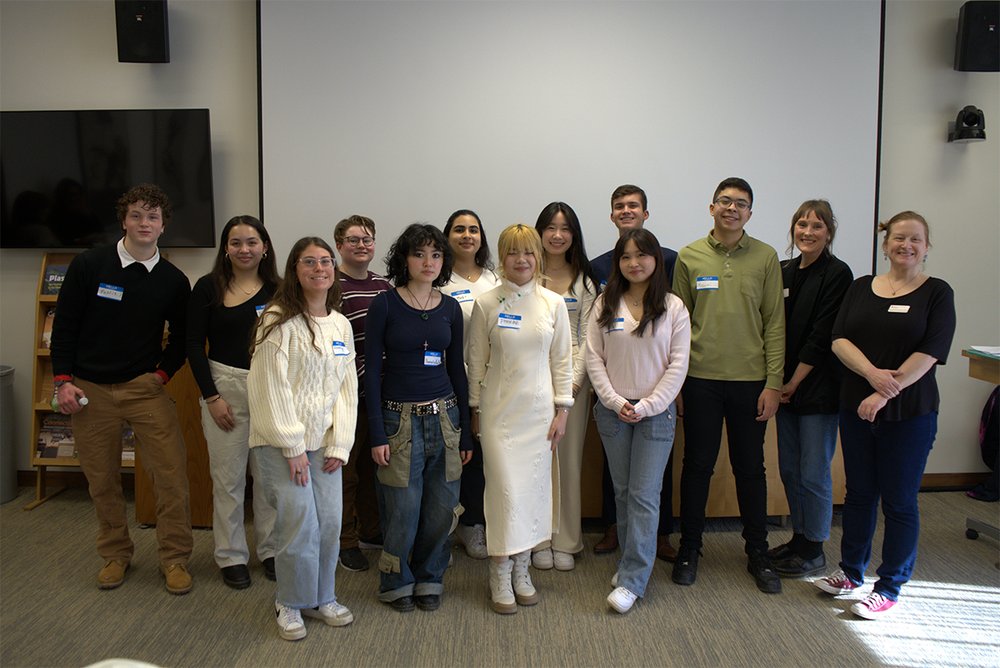
The Spring 2024 cohort poses together for a group photo of after an afternoon of discussing their research.
by Jana Rosinski, SCRC Instruction & Education Librarian
This spring, the SOURCE (the Syracuse Office of Undergraduate Research and Creative Engagement) piloted a new undergraduate research program called SOURCE Explore. The SOURCE offers a variety of programs to foster, support and expand diverse undergraduate participation in faculty-guided scholarly research and creative inquiry (“About The SOURCE”). The SOURCE Explore programs are for students in their 1st or 2nd year with no prior research experiences but who are curious to learn more. With the guidance of an SU faculty or research staff member, students are introduced to research through hands-on activities—learning the ins and outs of research processes in a particular field of study by doing them.
In this inaugural edition of the program, both SCRC (Special Collections Research Center) and Community Geography were able to partner with the SOURCE Explore program to provide students with a unique focus. In our program, Finding Yourself in the Archives with Special Collections Research Center (SCRC), a student cohort of eleven students from colleges across campus worked with me and my colleague Amy McDonald, SCRC Reference & Access Services Librarian, in a one-month archival research residency. Over weeks of hands-on archival training workshops and one-on-one meetings, the students learned about what constitutes special collections and archives; how to find, analyze, and contextualize primary sources; and how to design and create unique creative-critical projects that explored an SCRC collection of their choosing with a topic of interest to them.
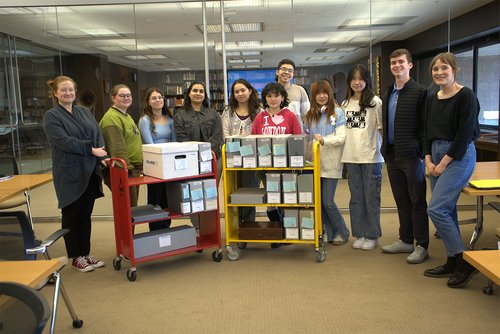
The cohort poses with boxes of collection materials they were researching.
At the end of the residency, students presented their work and their experience at a research fair along with the concurrent program and cohort working with faculty in the Geography Department to a small audience of faculty, staff and students. Following is a brief overview of each student’s project, along with a photo of them discussing their research with audience members:
- Caitlyn Begosa examined the cultural implications and understanding of the Republic of the Philippines from a Westernized menu in the papers of American writer and researcher of food and travel and CIA intelligence officer Kay Shaw Nelson.
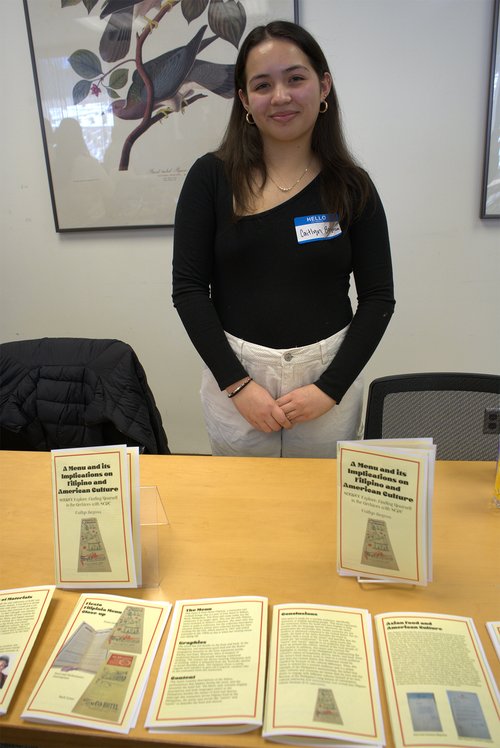
- Shane Holcombe explored the legacy of SU Basketball within the University Archives (former Head Coach Jim Boeheim’s Collection and the 2003 Men's Basketball NCAA Championship Collection.
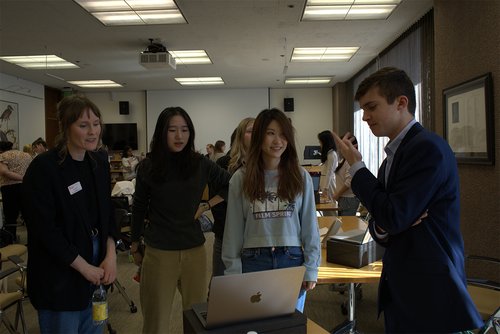
- Franny Porreca traced a former member of the 19th century Utopian/Perfectionist Oneida Community through his assassination attempt on President Andrew Garfield’s life and his subsequent trial.
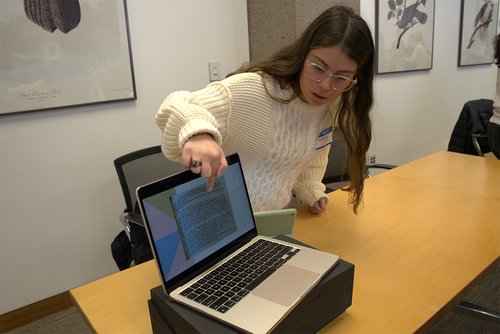
- Miral Ali spent time with the body of work within American art photographer Linda Troeller’s papers to better understand the process and person behind the photographs of the TB-AIDS Diary project.
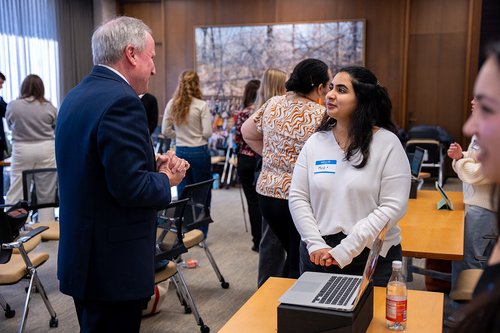
- Lance Watson examined personal correspondence and mementos in the Walt Whitman Collection to seek patterns in his written works that reflect this introspective understanding of the writer’s intention in his works.
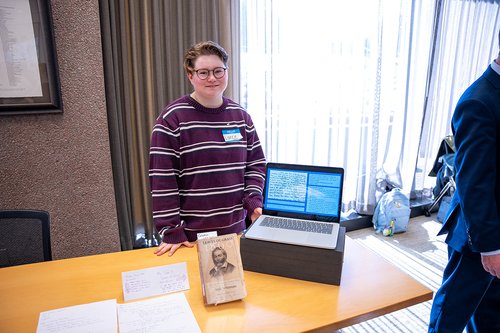
- Annabelle Reichelt surveyed fashion trends through an archival lens, looking at runway silhouettes starting with photos in the La Femme Politique Fashion Show Collection, a small collection of photographs featuring Black women in a 1964 benefit fashion show for Bethel African Methodist Episcopal Church.

- Patrick Riley looked into newspaper discussions of how Germany should be regarded in global society to add complexity to how we understand the outcome of World War I (World War I Collection of published material, clippings and ephemera relating to the war).
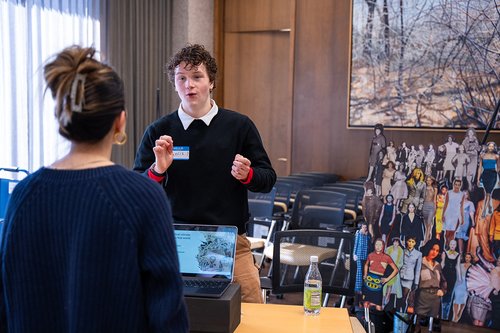
- Alyssa Tran drew parallels between the Chinese experience of the United States through art and education in the papers of Chen Chi (Chinese-American painter) and Rodney Gilbert (American journalist and correspondent for the North China Daily News).
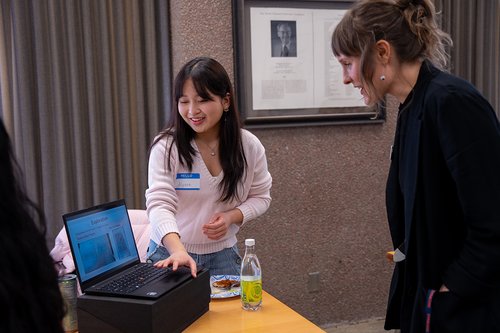
- Leila Liang looked at cultural and scientific representations and understandings of mental illness through the Thomas Szasz Papers, 20th century Hungarian-American psychiatrist and scholar.
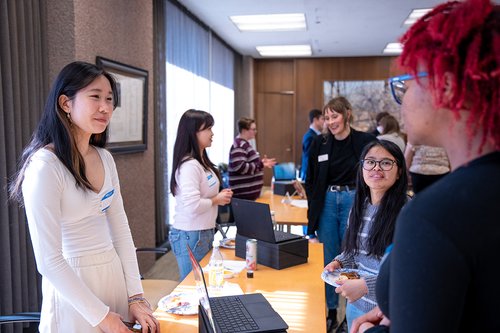
- Rowel Jimenez explored the evolution of science fiction as canonical entertainment in popular culture through the records of 20th century publisher of mystery, science fiction, and fantasy titles, Mercury Press Records.
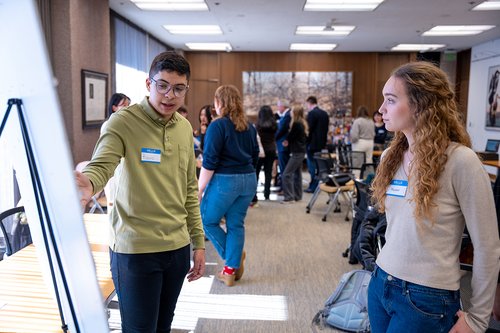
- Phoebe Feng compared the construction and composition of the Shutendoji Emaki scrolls and an early printed scroll with attention to influences of art, architecture, technology, and cultural exchange.
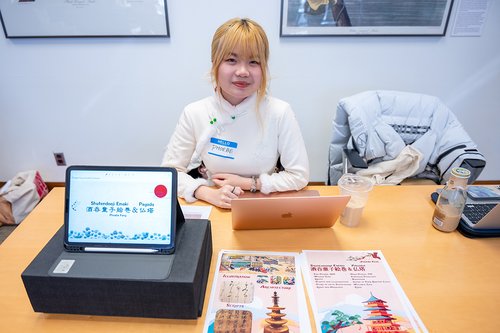
Although the program has ended, the work lives on. The students’ presentations of research can be viewed on SURFACE, Syracuse University’s digital repository, an open access resource that provides long-term preservation to a wide range of scholarship created by University students, faculty, and staff including articles, books, journals, videos and more.
